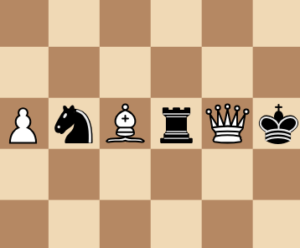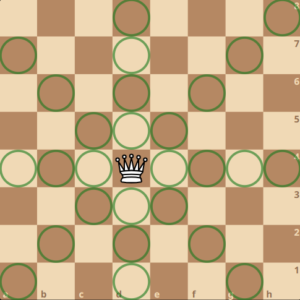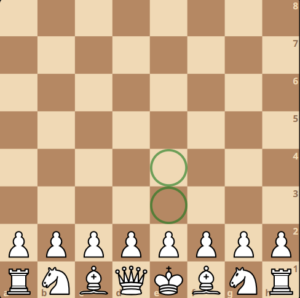I used to stare at the games my uncles played when I was little and wondered what on earth they were doing! Soon I discovered that they were playing a game named “chess”. And my uncle explained me the movement of each piece on the board. But little me couldn’t keep up with the, so I ended up daydreaming and came up with my own chess rule: the king could move up to 7 squares in any direction—horizontally, vertically, or diagonally. I can’t believe it now that I came up with this wild thing!
If chessboard is a battle-field, then the chess pieces are your weapons. You have got to know how to use your weapons most efficiently in order to crush your opponent. You can start learning chess by learning the chessboard first, and the very next thing you should is to learn about the pieces and their movements. Without further a due, let’s get familiar with the pieces first.
The Pieces
There are six types of pieces in chess. These are the Pawn, the Knight, the Bishop, the rook, the Queen, and the King. You can identify the pieces from the diagram below.

Piece Movements
The Rook
Rooks are one of the most powerful pieces in the board, often used in endgames. It can travel anywhere of the board either horizontally, or vertically unless there is another piece on the way. More specifically, rooks move along with files and ranks. It can to left, right, up, down in a straight line. Rooks are worth of 5 points in chess.

The green squares are the places rook can go on the board.
The Bishop
Bishops move diagonally on the board as far as the player needs. It can travel any number of squares unless the diagonal is blocked by the player’s own pieces. Each player has two bishops to start a game; one is light colored and another is dark colored.


If you see both of your bishops are in the same color, you may have mistaken somewhere. Bishops are considered a minor piece in chess. Bishops are of 3 points each.
The Queen
Queen is the most powerful piece in chess. The queen is worth a massive 9 points. It is considered a major piece like rooks. It can move horizontally, vertically, and diagonally to any number of squares unless its way is blocked by the player’s own piece. You can think the movement of the queen in this way: Queen = Rook + Bishop. Queen can do what the rook and bishop combinedly do.

You can see as the diagram shows how powerful the queen is. She can almost go anywhere on the board.
The Pawn
Each player starts with 8 pawns, which is 50% of the total pieces at the start of the game. The pawns are arranged in the 2nd rank for white and 7th rank for black. Let’s consider this tutorial from white’s perspective. In this case, the first square or the starting squares for the pawns are on the 2nd rank. Pawn can only move one square forward at any time, and maximum of two squares forward from its starting square. Pawns don’t move to its right or left, or backwards.

In the diagram above, the e2 pawn can move forward to e3 or e4 since it is in its starting square.

Once a pawn is moved, in this case the e4 pawn, now it can move only move forward by one square from now on. But the capturing method of pawns is different from its pattern of movement. We’ll discuss capture in a minute. Pawns worth only 1 point and it is the least powerful piece on the board.
The Knight
Among all the pieces in chess, knight’s moves are tricky. It has a unique moving pattern unlike other pieces. It doesn’t move horizontally, vertically, or diagonally. Let’s see how knights move in two steps.
Step 1: Knight goes 2 squares either horizontally or vertically.
Step 2: Then goes one square perpendicular (90 degrees). Simply, one square to the left or right.

You can see the squares highlighted that the d4 knight can go to. You may have noticed that the moving pattern of a knight is same as the letter “L”. Knights are considered as a minor piece in chess and it is worth 3 points.
The King
King is the most valuable piece in chess. King’s movement are limited to only one square. But it can go horizontally, vertically, and diagonally as well.

Capture
Knowing captures is as important as having the knowledge of the movements of pieces. Capture means replacing an opponent’s piece with your own on a specific square. Each chess piece captures on squares within its movement pattern except the pawns.
You get the idea of capturing from the above video.
Pawns can only capture one square diagonal. After capturing pawns again move forward by one square.
You are now familiar with the movement pattern of all chess pieces. It was easy, wasn’t it?




